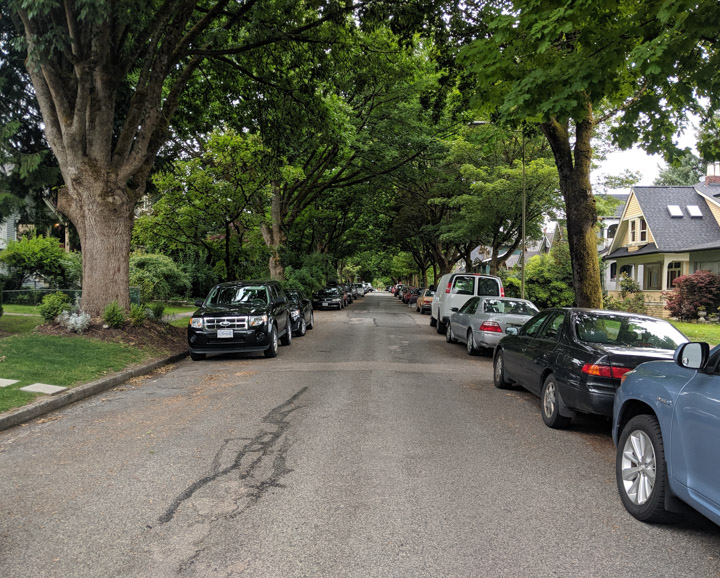
Recently I enthused on the life impact of getting an e-bike. The enthusiasm remains and I two-wheel to work almost every day. Often my thoughts are of the form “What makes this so great is…” Here are some of those, but there’s a very specific assumption: that your home city has decent bikelane infrastructure. Vancouver’s is not world-class but also not terrible, and I’ll toss in a few pix from my commute for non-bike-commuters who might not have seen what that means.
I have 2½ blocks of regular street between home
and the nearest bike route. But it’s pretty nice.
It’s free · No charge to use the public roads or bikepaths. No charge to park, anywhere (the mind reels). The bike’s not free and I bought panniers and a lock, but compared to basically any car it’s peanuts, maintenance too (especially maintenance, actually). I have an e-bike so there are a few pennies’ worth of charging power every other week. ¶
Public transit here is $24/week for my route, car parking is $10/day and way up, plus gas if you’re still misguidedly driving a fossil car.
· · ·
One technique for making a street bike-friendly is frequent interruptions so that for cars so it’s not a direct route to anywhere. Another is a roundabout at every other corner that makes them wake up and steer. Another is to have lots of bikes on it.
It’s fast · This thing ticks along at 25km/h on the level, 20 uphill, 35-40 downhill. If I take my car and the traffic’s not bad I can get there way faster, but the traffic’s never not bad if you want to work reasonably conventional hours. You could argue that the car offers comfy seats, weather protection, and music. But… ¶
No waiting! · Humans are born to travel; being on the road’s one of our natural conditions. (If you’ve ever doubted this, go read Chatwin’s The Songlines.) But I have never in my whole life encountered anyone who wasn’t irritated during those times when they’re trying to get somewhere and have to wait. Urban driving is all about waiting: For the light, for the other cars trying to get on the bridge or make that turn, for the slowpoke who isn’t sure where they’re going, for the pedestrians drifting across the road looking at their phones. ¶
It’s not perfect. This is a combo crosswalk for pedestrians, who have a right-of-way over cars, and bikes, who don’t. But if you meet their eyes they usually stop and then you should give them a friendly wave so they feel virtuous.
When you’re commuting by bike, you only ever stop for traffic lights and on a well-designed bikepath there aren’t many. It’s all flow and motion, the wind in your face and the scenery hurtling backward. For my money, this is the biggest win. I’ve never claimed the virtue of patience but I don’t think I’m that unusual.
· · ·
Above, probably the most dangerous part of my ride. Not because it’s shared with cars — the lanes are well-marked and there’s a stop sign at every corner. It’s because it’s a steep downhill and you can have way too much fun going fast, which in itself would be OK except that bikes have really terrible braking power, especially on wet streets, which we have a lot of in Vancouver. I skidded right through a stop sign the other day, terrifying myself, and now I take it slower than I used to.
It’s good for you · This is a little more complicated than you might think, because cyclists are several times more likely than motorists to be killed per kilometer traversed. I can testify to this; in 2000 I was hit by a car that lurched into forward motion as I was coasting through a crosswalk 18 inches in front of its bumper, severely broke my shoulder, had surgery and spent a week in hospital. But — did I mention it was complicated? — cyclists cover a lot fewer kilometers than motorists, and the death rates vary strongly with age and fitness, and the data doesn’t necessarily apply to cyclists on a modern well-designed bikepath network. ¶
The only part of the route which is an ordinary road. It also goes right by a big cop shop, so you have to think the drivers will be a little more careful than average.
Another danger is pollution and yeah, urban cycling, during the current fossil-car interregnum, does involve inhaling exhaust.
But then there are the health benefits of getting a half-hour or more of low-impact aerobic exercise every weekday, and they are not subtle, not in the slightest.
Researchers at regular intervals over the years have tried to balance out the pros and cons. Spoiler: The upside wins, big-time. Probably the best survey I ran across researching this was Bicycling: Health Risk or Benefit? by Teschke, Reynolds, Riese, Gouge, and Winters (of UBC and SFU, here in Vancouver!) published back in 2012 but more recent papers I ran across came out about the same, and this one is nicely condensed and presented. Four of the studies they survey, from 2009 through 2012, offer numerical estimates of the ratio of benefit to risk, and those estimates are: 15:1, 9:1, 19:1, and 96:1.
I get to bicycle over the ocean twice a day, every day. The view never gets old.
This is what the bikepaths downtown look like. There’s more stopping for red lights, but they have no-nonsense concrete barriers between you and the cars.
Mentally too · Some of those studies actually call out mental-health benefits such as decreased risk of depression, and that’s interesting. But at another level, I feel intuitively that a half-hour in which I’m living in the moment, not gathering wool, not ingesting media, watching like a hawk for dorky drivers and pokey pedestrians, banking around corners and dodging potholes, pedaling hard to beat a yellow light… well, the benefit doesn’t feel subtle. ¶
When I walk into the lobby at work I feel more alive than the mole people emerging from the car-park elevator.
The last lap, up Vancouver downtown’s Robson street. Which is comically vacant all the time except for a few minutes around 9AM and 5PM. Lots of times you could spread out your yoga mat for a few stretches in either lane with no worries. They really ought to make it a pedestrian/bike street.
It’s good for the planet · Well, yeah. Come on and give it a try. If you’re a little old and/or creaky, splash out for an e-bike. Call it an investment because it is, and in things that are important. ¶
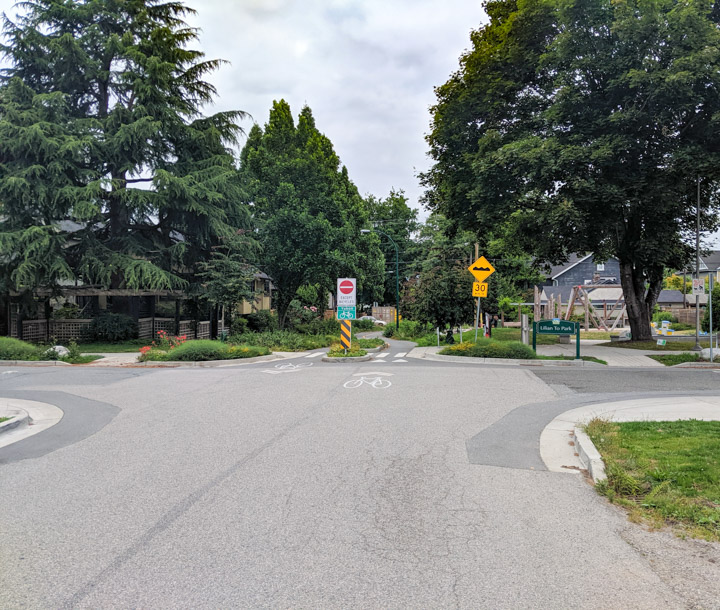
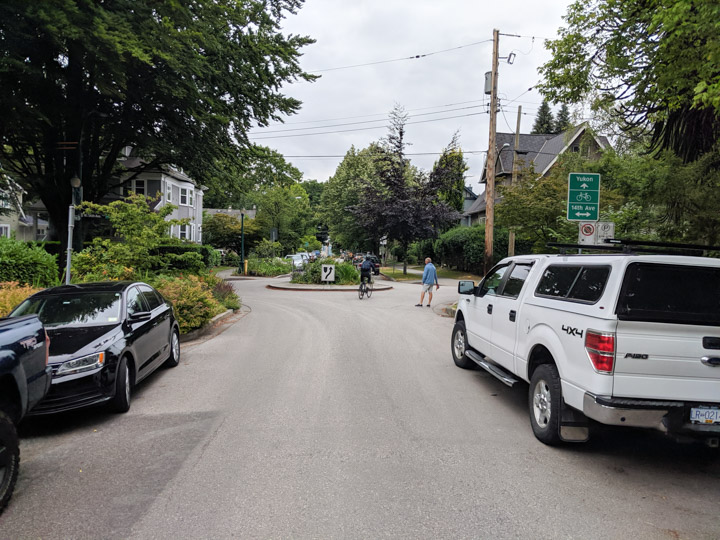
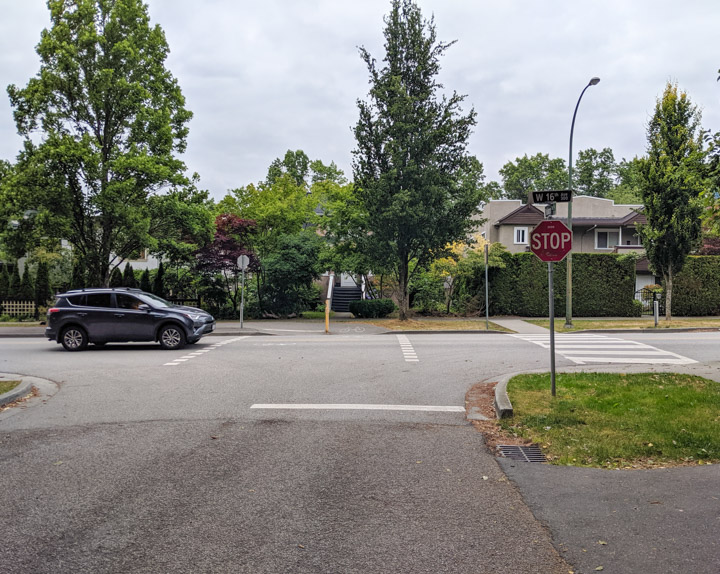
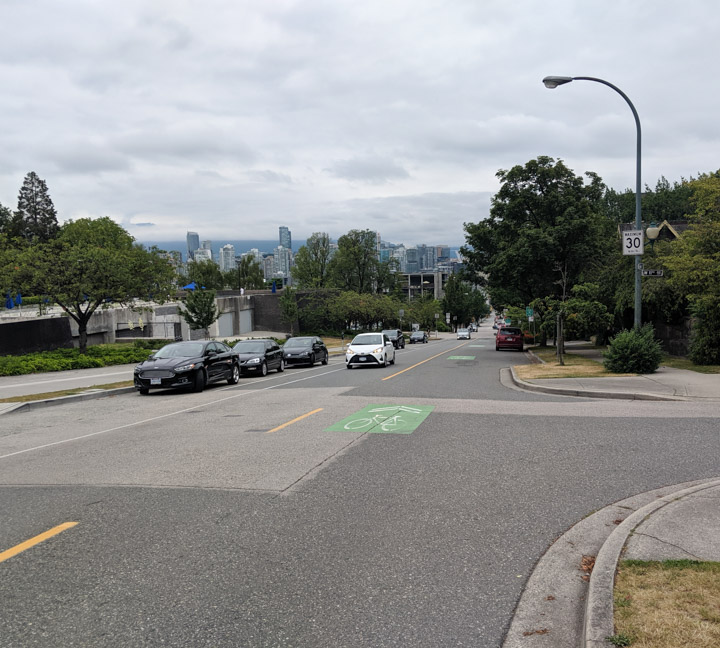
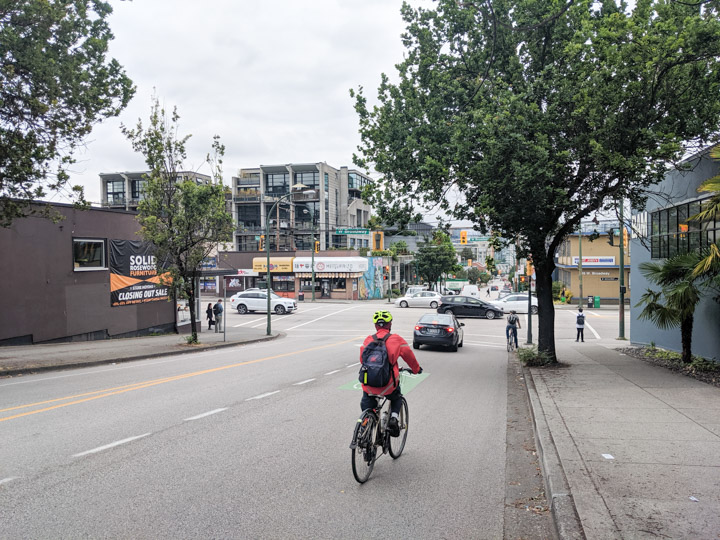
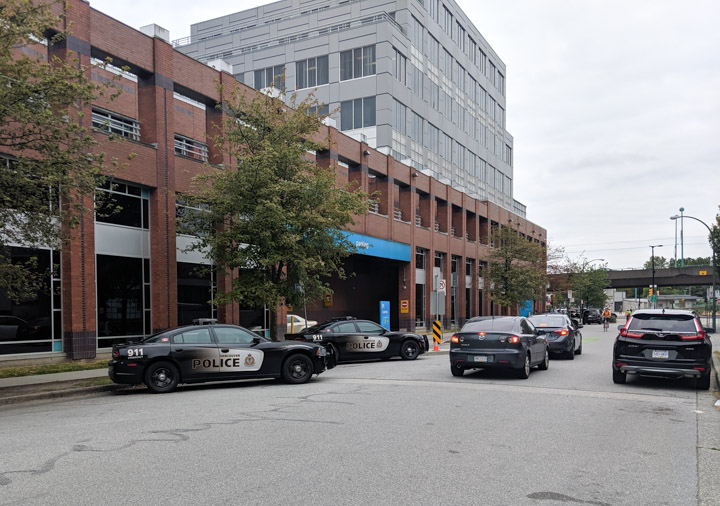
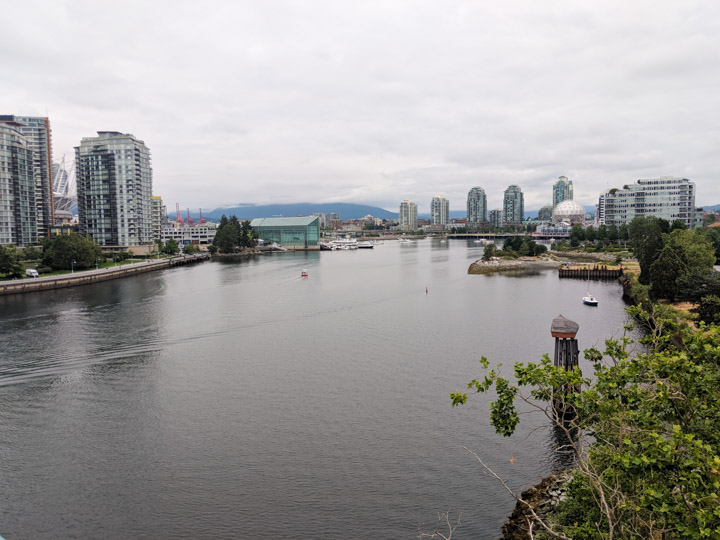
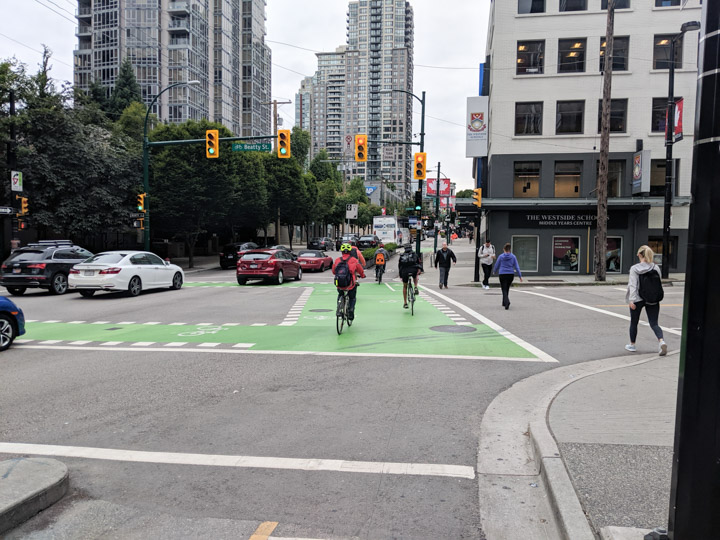
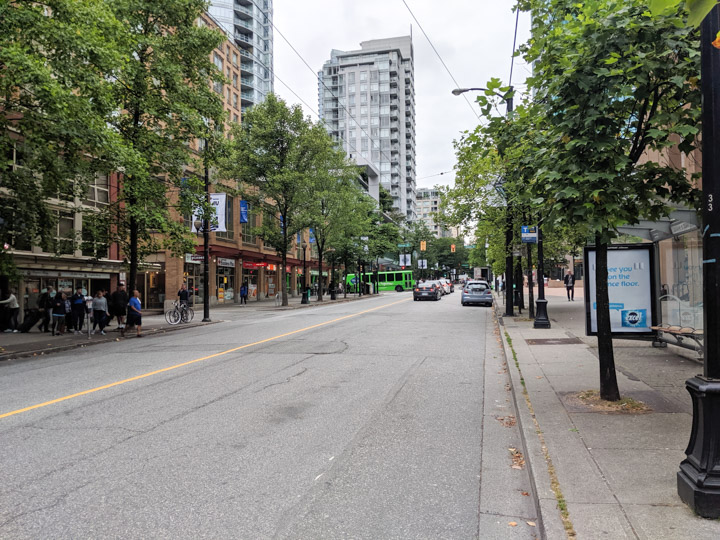

Comment feed for ongoing:
From: John (Jul 07 2019, at 00:56)
Great story, I hope more people follow your example.
The breathing pollution thing isn't so clear cut, if you're in a car the air in the car comes from outside, and air intakes are often at the level of the car in front.
[link]
From: PeterL (Jul 07 2019, at 09:15)
I don't think I would have survived my last 10 years of work if I hadn't bicycled to work most days, just because of the lower stress of not driving in traffic — I was getting an hour+ "free" exercise each day because the commute time was roughly the same bicycling or driving. But the exercise didn't get me into as good physical shape as I had thought, even though I was bicycling (non-electric) 15 miles (24 km) a day. After I did poorly on an exercise stress test, my cardiologist prescribed "more hills". (Retirement is even less stressful ... I passed my latest exercise stress test and I've also lost 30+ lbs (15 kgs).)
PS: Those suburban street scenes would be even nicer if there weren't rows of parked cars on them. https://en.wikipedia.org/wiki/The_High_Cost_of_Free_Parking
[link]